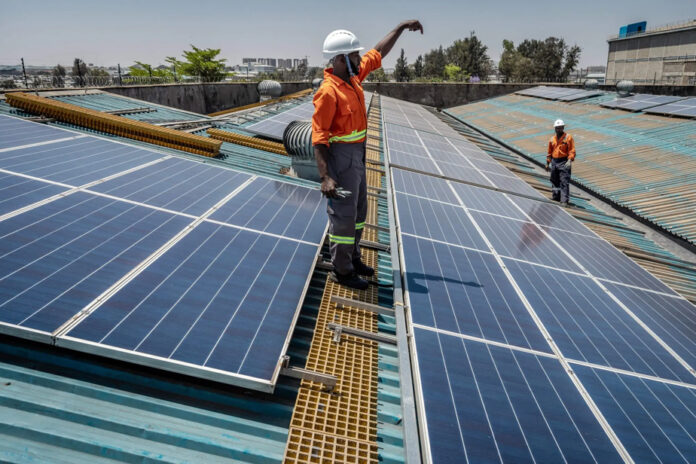(Dubai, United Arab Emirates) Raising rates to curb inflation hurts the fight against climate change by steering developing countries away from renewable energy, raising concerns at the United Nations climate summit in Dubai.
Even if we recognize the need for high rates, voices are being raised at COP28 to highlight the negative impact of these efforts on poor countries. They are the most vulnerable to climate change and must decide which energy systems to invest in, a crucial choice.
Rich countries and international agencies need to be more creative in directing funds to countries in Africa and Asia facing high interest rates, officials say. Without this, we risk missing the opportunity to minimize future CO2 emissions as millions of people in these countries emerge from poverty and consume more energy.
“This is a very tough time for many countries,” says Kristalina Georgieva, economist and managing director of the International Monetary Fund.
Central banks around the world have issued rapid, sharp rises in interest rates to combat the biggest surge in inflation in nearly 30 years. It slowed in 2023, but rates are expected to remain high for years to come.
The rising cost of borrowing hurts renewable energy projects more than fossil fuel projects. Because almost all the investment in a wind or solar farm has to be done up front, while a large part of the costs in a coal or gas power plant is the cost of the fuel, which is spread out over time.
High interest rates also weigh on the budgets of developing countries while lowering the value of their currencies.
These tensions arise as these countries must spend hundreds of billions to adapt to global warming while increasing their energy production in order to raise the standard of living of their populations.
This double challenge worries the political and economic leaders gathered in Dubai.
“The big problem is that developing countries have no control over the crises that affect them,” notes William Asiko, vice president of the Rockefeller Foundation for Africa. These crises make it easier to invest in fossil fuels today. »
Often, even before work begins, the price of electricity sold by green producers is determined by long-term contracts. This makes their projects very sensitive to rising interest rates and inflation.
Around the world, rising interest rates are driving up the cost of clean energy projects, reports the International Energy Agency: offshore wind farms, nuclear power plants, electricity grids, all suffer. The effect is the same for a home owner wanting to buy a heat pump or a motorist shopping for an electric car.
The index S
Many experts say the high rates won’t slow the long-term growth of renewable energy. Their price has risen a bit recently, but after 10 years of steep declines; then solar and wind remain competitive compared to fossil fuels.
Forecasters still estimate that renewable energies will overtake coal as the world’s leading source of electricity by 2030. And Europe still wants to turn away from fossil fuels – especially Russian gas – if only to protect itself from possible price increases.
But in developing countries, interest rates are undermining renewable energy, which could have lasting consequences for the climate.
Lenders often charge a premium for these riskier investments. And rising interest rates aggravate this risk.
“It reduces the return on investment of many renewable energy projects. Investors know this and show less interest,” observes Jessica Obeid, head of energy transition at SRMG Think Research and Advisory, a consulting firm which published a study on Monday at COP28 on the challenges of financing related expenses to the climate in the Middle East.
When central banks in rich countries raise interest rates, it attracts capital out of developing countries. It becomes more attractive to invest in low-risk products, such as US Treasury bonds. This flow of money out of poor countries also reduces the value of their currencies.
At the Dubai summit, countries are calling for a commitment to triple the amount of renewable energy installed worldwide by 2030. But rising financing costs make this goal more difficult, says Sumant Sinha, CEO of ReNew Energy , India’s largest renewable energy developer.
“The need for renewable energy is increasing, the targets are increasing, but the capacity to achieve them is decreasing,” Sinha says.

